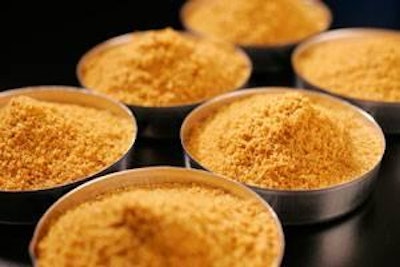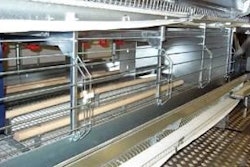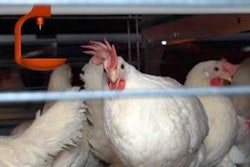
Distillers dried grains with solubles, known as DDGS, have become a mainstay in poultry rations over the past five years, increasing to as much as 20 percent in many laying hen rations. The oil content of DDGS has presented a highly available source of energy for poultry consuming DDGS in the ration.
Dr. Robert Wisner, an Iowa State economist, has predicted that approximately 70 percent of ethanol plants will be separating at least 3 percent of oil from their DDGS products by the end of 2012. As lower oil DDGS products become available, the palatability and feeding value of these new products needs to be tested in poultry rations.
Research results
University of Georgia research (Guney et al., 2012) reported an average oil value of 10 low oil DDGS samples to be 7.6 percent compared to a normal value of 9 percent. They also reported that the protein content of low oil DDGS was slightly higher (27.6 percent) than that found in normal DDGS (27 percent). Further research on the effects of low oil DDGS on broiler production and hen performance need to be conducted to further refine metabolizable energy values for such DDGS products.
University of Nebraska research (Kreifels and Purdum, 2012) conducted with laying hens looked at the effects of reduced oil DDGS incorporated at 20 percent of the ration on feed intake and egg production. Three DDGS samples were tested: normal oil (11.2 percent), medium oil (7.30 percent), and low oil (5.62 percent), and compared to a diet with no DDGS (Table 1).
Experimental diets (Table 2, Diets 2-4) were formulated to contain 20 percent DDGS and to be isocaloric and equal in protein to the control diets without DDGS. Medium and low oil DDGS products were formulated into the rations using the same metabolizable energy value as normal DDGS even though researchers knew metabolizable energy was likely lower.
The diets used in this research had high metabolizable energy levels (Table 3) as indicated by gross energy analysis; calculated metabolizable energy was 2,860 kcal/kg for the control and normal DDGS diets (Table 2). No adjustments were made in diet metabolizable energy for the medium or low oil DDGS diets. It was theorized that the low oil DDGS lowered overall dietary metabolizable energy intake by 6-10 kcal, thus not having an extreme effect on total energy available to the hen. Hens increased intake by about 2-2.4 grams/day on the medium and low oil diets, which was not significant (Table 4).
A place in poultry rations
There were no significant effects between treatments with regards to daily egg production, feed intake, egg weight, and hen weight (Table 4) despite the reduction in dietary fat and gross energy due to the lower fat DDGS. Egg production dropped slightly with DDGS treatments, but this was not a significant decrease. Lower dietary metabolizable energy and intake did not significantly alter hen weight gain during this trial.
There was a significant effect between the control diet and other treatment diets containing DDGS in regards to yolk color with all DDGS treatment diets producing higher yolk scores (Graph 1). Differences between the DDGS diets versus the control diets were significant with a p-value of <0.0008, but DDGS diets compared with each other were not significantly different; the p-value was >0.0869.
In summary, low oil DDGS products can hold a place in poultry rations, but have slightly less value since oil is taken out. Other sources of energy will need to increase in the rations at economic prices to provide the energy needs of the bird. Low oil DDGS products are more likely to fit in layer rations, which are lower in metabolizable energy than broiler or turkey rations. Most laying hen rations likely have enough flex in their metabolizable energy formulation to allow for 4-6 kcal/kg drops in energy with hens adjusting feed intake slightly up.
Because of the reduced feeding value for poultry, low oil DDGS will need to be priced lower than high oil DDGS to gain a place in poultry rations. Availability of DDGS products for poultry will remain high as exports to countries like China have leveled off and domestic ethanol production remains steady.
















